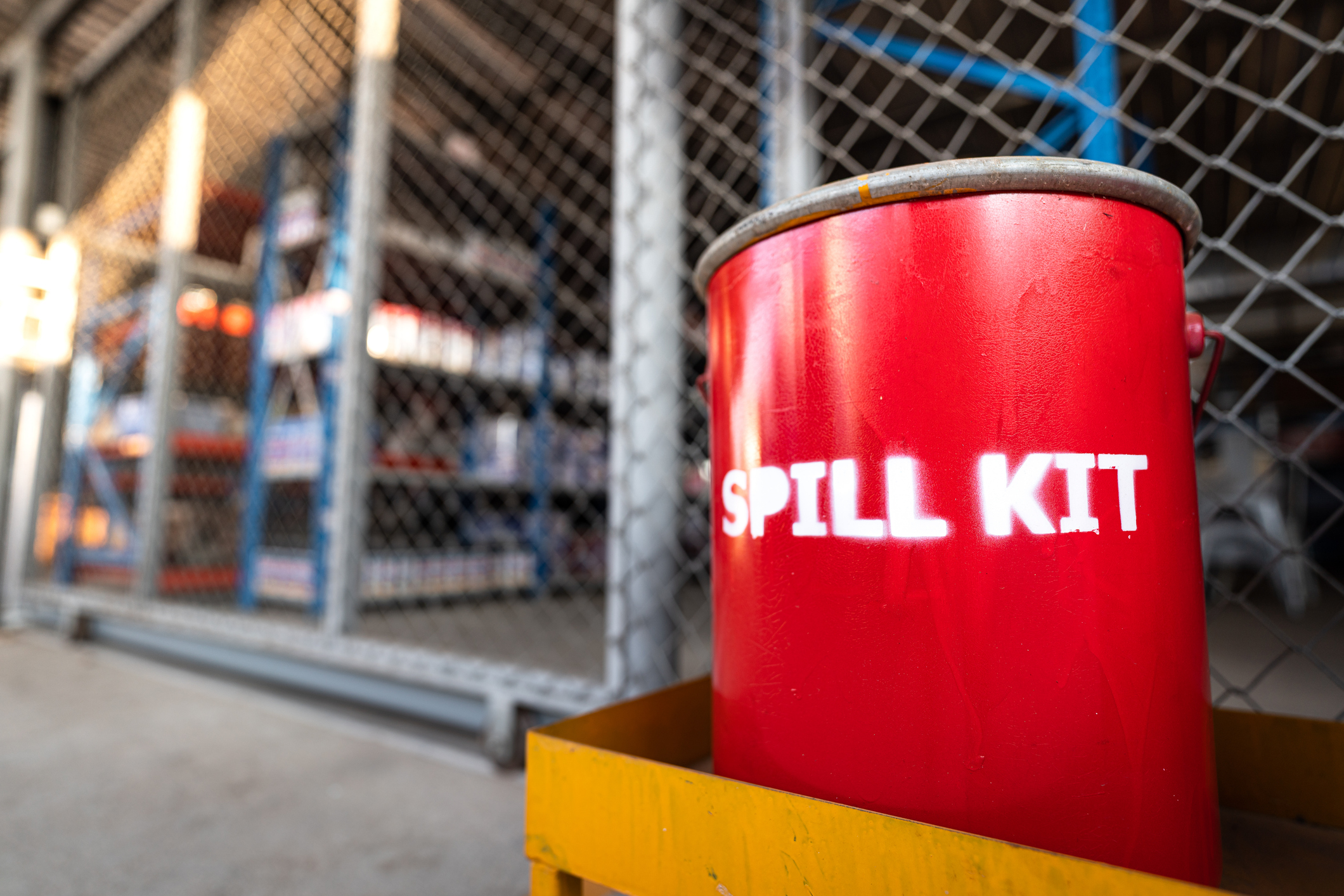This blog post is a continuation of our Emergency Preparedness Tip Sheet series. While no one ever wants a spill to happen, it’s important to know what to do if it does happen, and to have a clear plan-of-action in place.
PREPARATION
Handling TELONE™™ requires operators and applicators to have specialized knowledge on how to react during emergency situations. This tip sheet covers a cornerstone of emergency preparedness: spill response. Properly managing a spill is essential to protecting both your people, the environment, and your reputation. Preparing before an emergency situation, such as a spill, can prevent a small incident from becoming a major one. In this tip sheet, we’ll walk you through the key actions for containing and cleaning up TELONE™ spills, ensuring a safe and effective response every time. Remember, there’s no coming back from a poor start!
- WRITTEN EMERGENCY RESPONSE PLAN CLEAR PROCEDURES FOR SPILL RESPONSE: It is important to have written step-by-step instructions on how to manage spills, including evacuation, containment and cleanup.
- ROLES & RESPONSIBILITIES: Assign specific tasks to trained personnel. Tasks include spill containment, PPE management, and communication with emergency services.
- LOCATION OF EMERGENCY SUPPLIES: have clearly marked locations for onsite spill kits, PPE, and first aid supplies.
- TRAINING: conduct regular drills to ensure that all persons understand and can execute the emergency response plan.
- CONTACT INFORMATION: include key contact numbers for supervisors, emergency services, and Teleos personnel; this ensures this information is easily accessible during an emergency.
- HAVE EMERGENCY NUMBERS READY:
- Local Emergency Services: 911
- Poison Control:1-800-222-1222
- Chemtrec: 1-800-424-9300
IF A TELONE SPILL HAPPENS, WHAT DO YOU DO?
INITIAL RESPONSE
- EVACUATE THE AREA: Immediately evacuate non-essential personnel from the spill zone. Move upwind of the spill and avoid inhaling vapors or fumes.
- INITIATE YOUR EMERGENCY RESPONSE PLAN: Notify supervisors, company emergency response teams, and nearby workers of the incident. It may be necessary to notify local hazmat response units. Once it is safe to do so, please contact your TELONE™ Specialist.
- PERSONAL PROTECTIVE EQUIPMENT (PPE): Only trained personnel wearing the appropriate PPE should approach the spill. Depending on the size of the spill, chemical suits and positive-pressure, self-contained breathing apparatus (SCBA) may be required.
- CONTROL FIRE HAZARDS: Extinguish all flames, shut off all spark-producing equipment; and only allow persons with spark-proof footwear in the area. Use care not to create sparks with hand tools. Do not allow any smoking.
CONTAINING THE SPILL
- STOP THE SOURCE: If it can be done safely, stop the release at the source (close valves, upright cylinders, move vehicles, etc.).
- PREVENT SPREAD: Use absorbent materials such as diatomaceous earth, clay, sand or other noncombustible, absorptive material from a spill kit, to contain the chemical. Construct a berm or barrier to prevent the spill from reaching drains, water sources, or sensitive areas.
CLEANUP PROCEDURE
- ABSORB THE CHEMICAL: Use absorbent materials like dry soil or a spill containment kit to soak up the spilled product.
- COLLECT WASTE: Sweep or shovel the absorbed material into properly labeled, secure containers for safe disposal.
- DECONTAMINATE: Clean all surfaces that have come into contact with the chemical using an appropriate cleaning agent recommended in the TELONE™ Storage and Handling Guide or SDS.
- PROPER DISPOSAL: Dispose of contaminated materials and absorbents in accordance with local, state, and federal hazardous waste regulations.
REPORTING THE SPILL
- DOCUMENT THE INCIDENT: Record details of the spill, including; amount, location, persons and response actions taken. Contact your TELONE™ Specialist for assistance.
- NOTIFY AUTHORITIES: If the spill has reached water sources, drains, or the surrounding environment, notify relevant authorities as required by regulations.
AFTER THE SPILL
- MEDICAL MONITORING: Monitor any individuals who may have been inadvertently exposed to TELONE™ for symptoms like respiratory irritation, skin irritation, or other health effects. Seek medical attention if necessary.
- REVIEW PROCEDURES: After the incident, review your spill response plan. Address any gaps in training, equipment, or procedures to prevent future incidents.
To download all of this information in an easy-to-reference PDF, click here.
Remember: This sheet does not replace information found in the TELONE II label, SDS, or Storage and Handling guide. Please consult these documents prior to emergencies and as you develop your emergency plans.
Disclaimer:
The resources and information provided are meant purely for educational discussion, contains only general information about legal matters, and is not to be construed as advice. Please note that any information or resources provided are not legal or regulatory advice, and should not be treated as such. You must not rely on the information provided as an alternative to legal advice from your attorney or other professional services. Teleos Ag encourages readers to consult with counsel, and their local, county, and state regulators. We make no representations or warranties, express or implied, in relation to the information provided through our resources and blog posts. It is the readers responsibility to know the laws related to 1,3- D, appropriate PPE, Licensing, etc., in his or her City, County, State, and Country.
- STORAGE SECURITY FOR TELONE™ by TELEOS - October 16, 2025
- TIP SHEET: PLACARDING FOR BULK SHIPMENT RETURNS - August 15, 2025
- Stewardship Tip Sheet: Tamper-Evident Packaging Requirements - July 14, 2025


